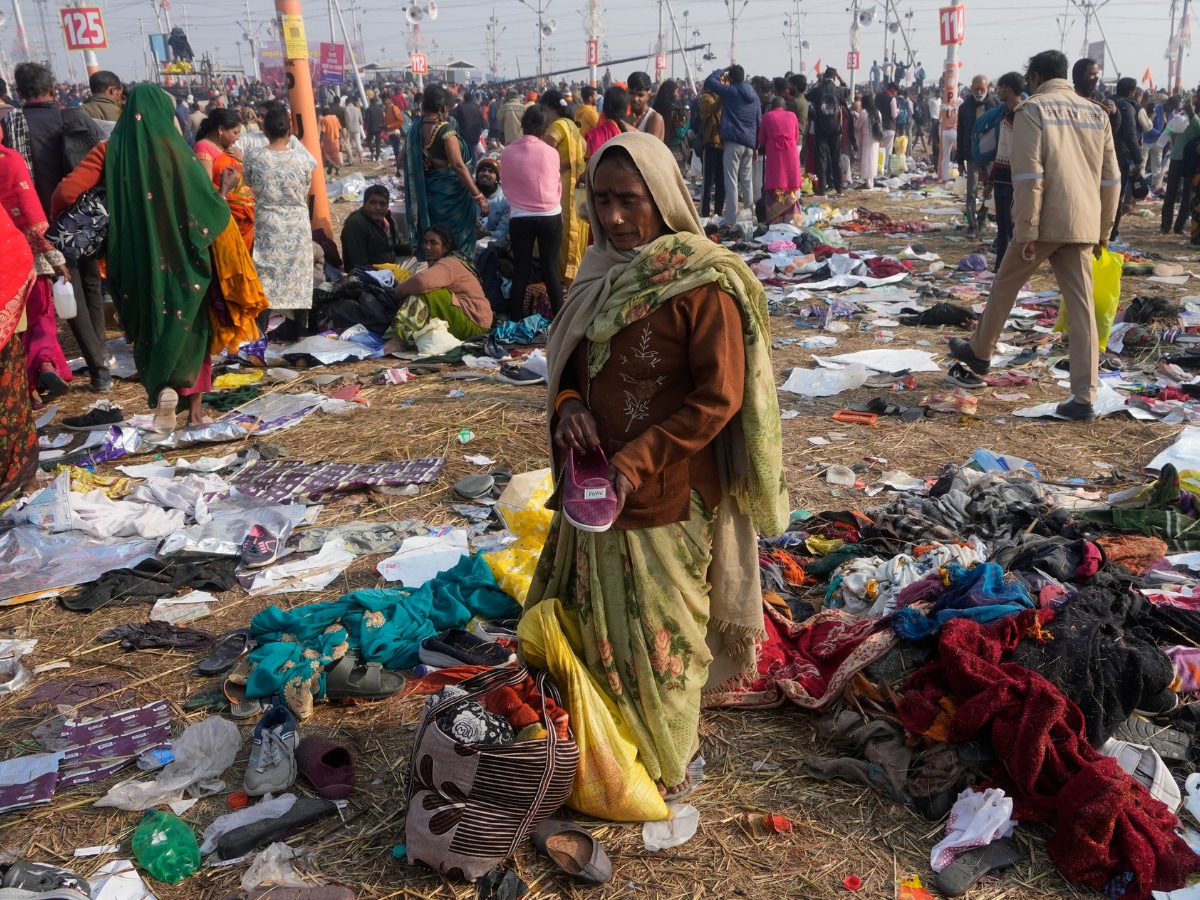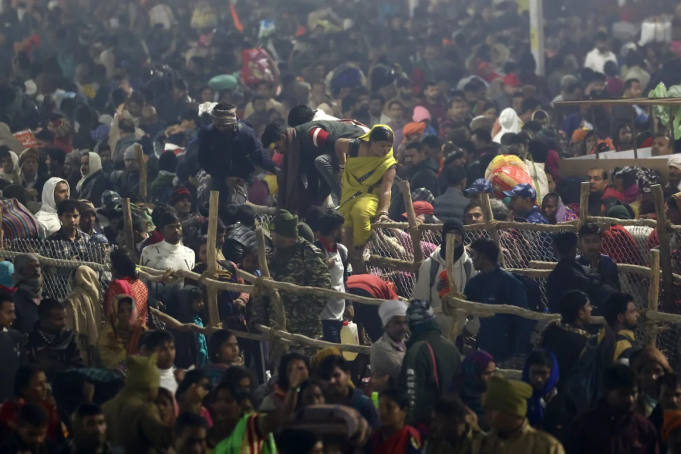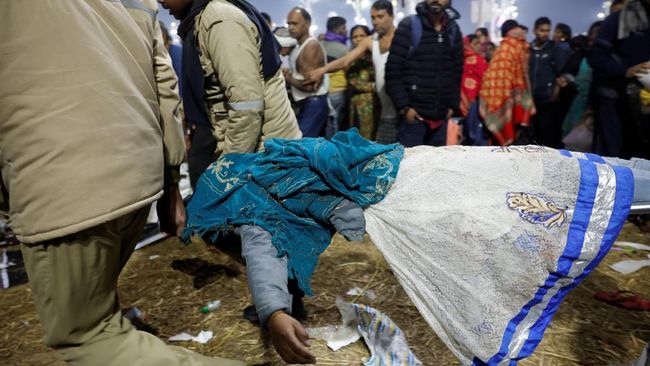Prayagraj, Uttar Pradesh: The air that once reverberated with the chants of “Har Har Mahadev” now hangs heavy with grief. The Maha Kumbh Mela, a spectacle of faith that draws millions, was marred by a tragic stampede on January 29th, leaving at least 30 pilgrims dead and scores injured. While the official narrative points to a sudden surge of devotees, a closer look reveals a grim picture of administrative lapses, poor crowd control, and a pervasive culture of VIP entitlement that likely contributed to this avoidable disaster.
A Deadly Convergence: The stampede occurred in the early hours of the morning as millions of pilgrims converged on the Sangam, the confluence of the Ganges, Yamuna, and mythical Saraswati rivers, for the auspicious “Mauni Amavasya” ritual. Eyewitness accounts paint a harrowing picture of chaos.
“It was like a tidal wave,” recounted an elderly pilgrim, still visibly shaken. “People were pushing, screaming, trying to get closer to the river. There was no order, no control. We saw people trampled, crushed underfoot.”

A System Under Strain: While the official death toll stands at 30, many fear the actual number may be higher. The sheer scale of the event, with millions of devotees descending upon a relatively confined space, stretched the limits of even the most meticulous planning. However, allegations of gross negligence and a disregard for basic safety protocols have surfaced.

- Inadequate Crowd Control: Critics point to a lack of proper crowd management measures. Barricades meant to regulate the flow of pilgrims were either insufficient or poorly maintained. The absence of clear exit routes and a lack of trained personnel to manage the surging crowds exacerbated the situation.
- VIP Culture Trumps Safety: The “VIP culture” – the practice of granting special privileges to influential individuals – further compounded the problem. Reports suggest that VIPs and their entourages were given preferential access, disrupting the orderly flow of pilgrims and exacerbating the crowd pressure.
- Communication Breakdown: There were also allegations of a communication breakdown between the various agencies involved in managing the event. This lack of coordination hampered timely response efforts and delayed rescue operations.
A Culture of Neglect: The Maha Kumbh stampede is not an isolated incident. Similar tragedies have occurred in the past, highlighting a systemic failure to prioritize public safety at large religious gatherings. Experts point to a culture of complacency and a tendency to prioritize spectacle over safety.
“The focus often shifts towards showcasing the grandeur of the event, attracting tourists, and accommodating VIPs,” observes a social activist. “However, basic safety measures and the well-being of ordinary pilgrims often take a backseat.”
The Aftermath: The stampede has cast a long shadow over the Maha Kumbh, raising serious questions about the government’s ability to manage large-scale events. A judicial inquiry has been ordered to investigate the incident, and the authorities have promised to take corrective measures to prevent future tragedies.
However, true accountability will require more than just inquiries and promises. It demands a fundamental shift in approach, prioritizing the safety and well-being of pilgrims over the demands of VIPs and the pursuit of spectacle. The Maha Kumbh, a testament to India’s rich spiritual heritage, should be a celebration of faith, not a reminder of the dangers of neglect and indifference.

